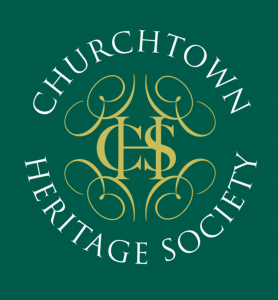Biddy’s Tree, Churchtown
by
Ruairi Hickey
I first heard of Maire Ni Ruairi early in 1948 and my informant was my Aunt Bridget Creagh (nee Hickey) of Lackaroe, Liscarroll. She mentioned that when she was a child (that would be more than a century ago) the Mac Ruairi name had been anglicised Rogers and that two unmarried sisters of this name lived at Biddy’s Tree. They were the last blood relatives of Mire No Ruairi, she believed.
A question immediately arises about the origin of the MacRorys of Biddy’s Tree: Did they spring from the ecclesiastical family of the name or the Gallowglass family? The former belonged to Tyrone and produced two Archbishops of Armagh: Gillasius MacRuairi around the middle of the twelfth century, and Joseph Cardinal MacRory in this century, a priest poet. Cathal MacRuari of Tyrone composed a lament for Owen Roe O’Neill about 1649. I am not sure that the Tyrone family were M. Ni R’s ancestors. The Gallowglass family are a junior branch of the McDonnells of the Glens of Antrim and may have given their name to the townland of Ballymacrory, neat Croom. It is possible that Sean Clarach’s ancestors were brought to Munster the same time as the MacRorys.
My first attempt to find Maire Ni Riaori’s grave was in July 1953. I was alone and unsuccessful. A second attempt in 1967 was equally unsuccessful. However, in Killabraher in 1971 I saw the grave and read the inscription on the headstone. I remember these words “Mary, wife of Din Begley” I cannot be sure about the exact dates but a birth date of 1700 and a death date of 1765 are very near to being correct. This would make her a contemporary of Sean Clarach MacDowhnaill who was born in 1691 and died in 1754.
I have never heard any poem composed by Maire Ni Ruairi. She may have been illiterate, like most of the women of her time. But if her father was a well-to-do farmer he could have employed a tutor for his children – an illegal act under the Penal Laws, but widely practised.
Many of Maire’s contemporary poets were ‘hedge school masters’ and taught Latin and English and sometimes Greek. They compiled manuscripts containing their own, and other poet’s compositions, but may have been inclined to look down on the “rannaireacht smail” of the uneducated.
A few months before Sean O’Riada’s death, twenty five years ago, I met him at the Maigue Poet’s Festival in Croom. We discussed Maire Ni Ruairu and he thought he had seen her name mentioned on an Irish manuscript kept in U.C.C.
It is possible that that “spailpini fanacha” from West Cork and Kerry acquired a knowledge of some of Maire Ni Ruairi’s compositions while labouring in north Cork. These could have survived in oral tradition and may now be in the archives of the Folklore Department.
Footnote: The Begleys originally came from Donegal (there is a Ballybegley in Inishowen) – they accompanied the MacSwiney’s.




